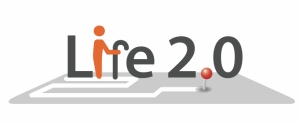Three very interesting reports are on my desk in this moment. I’m very slow at reading them, but I think they are a must for whoever wants to work on service design, especially in the public sector.
The only one I managed to read so far is “the Journey to the Interface”, by Sophia Parker and John Heapy (Engine) (Parker and Heapy 2006). The other two are “Designing for Services – Multidisciplinary Perspectives “(Kimbell and Seidel 2008) and “Innovation by Design” edited by Emily Thomas (Thomas and Grace 2008). In fact there are many interesting reports on public services coming out almost every week and mainly from UK (Damn!!! How comes the other countries are so late in this?) Therefore I created a new page in the service design wiki on recent reports on service design.
The report by Sophia Parker and John Heapy is VERY interesting. In fact the report was written in 2006 and things seem to change very fast in UK, but probably this document was a good step towards the most recent announce of a design council program for the development of innovative public services in UK.
Initially, the reference to the journey and the interface made me think that this was yet another report on experience design. In fact the report doesn’t go very deep in the question of how to design the “mechanism” of a service, but it considers the whole strategic and political framework for the development of innovative services. The report considers the shift from fordism to mass customization and to new needs for services to be co-produced, thus it emphasizes the importance of designing the point of contact in a way that supports individual needs and local solutions.
I found the third part particularly interesting, because, for the first time, I’ve seen someone mentioning the need for measuring service performance. The authors propose to measure service performances not just in terms of traditional metrics (e.g. waiting time) but also in terms of user experience. “this form of measurement – in customer terms, not universal standards set centrally and sometimes arbitrarily based on what users might judge to be good – can be called my metrics” (p70)
Also part 4 – on the politics of service design – Considers the main assumptions in the existing public service system (about efficiency, personalisation and devolution] and analyses those assumptions in a service design perspective. By focusing on the relationship between services and people, rather than on organizational efficiency, service designers can really think of improving services on a day-to day basis. This can be done thourhg harnessing users’ participation, feedbacks and insight generation.
Another concept I found very interesting and very close to the way I see the question of innovation in public service is the investment in “in-between” spaces. Traditional public services are creating “light spots”, in which services are offered. Within those spots services are working at their best. However those light spots are also creating deep shaded areas, in which services are not very efficient or are not accessible. For example some elderly care services may work very well in an area, but may be very inefficient or may not respond very well to people needs in another areas. Childcare services may work very well for people working in standard working areas, but be inaccessible or inefficient for people with unusual working hours. Meal services for elderly people may work very well for people with relatively normal diets, but be inefficient for people with very special dietary needs. Serving those interstitial areas would be very expensive or sometimes almost impossible. Investing in “in-between” space, as far as I understand, means giving spaces for people to work out solutions in those spaces. This would be possible by making space for people to contact each other, thus promoting horizontal network and forms of collaboration institutions and the users of public services. (e.g. the patient opinion website, http://www.patientopinion.org.uk)
In such interstitial spaces the wisdom and creativity of people emerge, harnessing this wisdom would be a big resource for innovation in services. Of course the intervention in those places requires a very delicate approach. In fact the authors pose the question of how can the government invest in those spaces without legislating for everything that takes places within them.
Kimbell, L. and V. P. Seidel (2008). Designing for Services – Multidisciplinary Perspectives: Proceedings from the Exploratory Project on Designing for Services in Science and Technology-based Enterprises. Oxford, Saïd Business School, University of Oxford: 56.
Parker, S. and J. Heapy (2006). The Journey to the Interface – How public service design can connect users to reform, Demos.
Thomas, E. and C. Grace (2008). Innovation by design in public services, Design Council – Solace Foundation inprint – The Guardian: 64.
<!–[if supportFields]><![endif]–>
<!–[if supportFields]><![endif]–>

